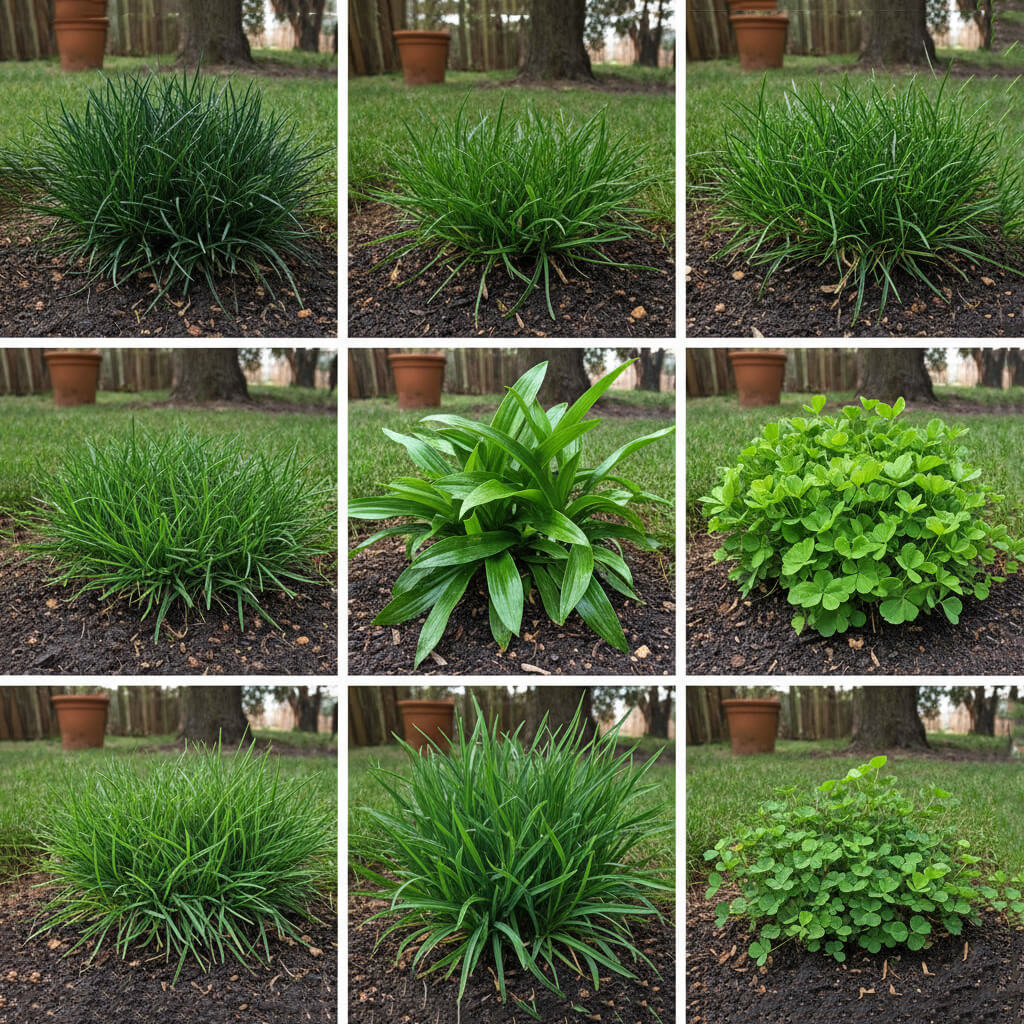Table of Contents
Year-Round Lawn Care Overview
A lush, healthy lawn doesn't happen by chance; it results from consistent, seasonal care throughout the year. Each season brings its own challenges and opportunities for lawn maintenance, and understanding these seasonal patterns is key to achieving the lawn of your dreams.
"Timing is everything in lawn care. The right treatment at the wrong time can be worse than no treatment at all."
Your lawn's needs vary greatly with the seasons, influenced by:
- Temperature fluctuations: Growth rates vary with temperature changes
- Moisture levels: Rainfall patterns affect watering needs
- Daylight hours: Photosynthesis rates change with day length
- Grass dormancy cycles: Different grasses enter dormancy at different times
Pro Tip
Use the GrassID app to get personalized seasonal care reminders based on your specific grass type and location.
Spring Lawn Care (March - May)
Spring is the season of renewal and rapid growth. As temperatures rise and days get longer, your lawn comes out of winter dormancy ready to grow vigorously.
Early Spring (March - Early April)
- Clean up: Remove debris, sticks, and leaves accumulated over winter
- Soil test: Check pH and nutrient levels to plan fertilization
- Equipment prep: Service mower, sharpen blades, check irrigation system
- First mow: Cut grass when it reaches 3-4 inches tall
Mid-Spring (Mid-April - Early May)
- Pre-emergent application: Prevent crabgrass and other weeds
- First fertilization: Apply slow-release nitrogen fertilizer
- Overseeding: Fill bare spots in cool-season lawns
- Begin regular mowing: Follow the 1/3 rule—never remove more than 1/3 of blade height
Late Spring (Late May)
- Spot treat weeds: Apply post-emergent herbicides as needed
- Monitor for pests: Watch for grubs and other early-season pests
- Adjust watering: Increase frequency as temperatures rise
- Edge and trim: Define lawn borders for clean appearance
Spring Checklist
- Rake and dethatch if needed
- Apply pre-emergent herbicide
- First fertilizer application
- Start weekly mowing routine
- Repair winter damage
Summer Lawn Care (June - August)
Summer brings heat stress and more foot traffic. The focus shifts from promoting growth to managing stress and keeping the lawn healthy under tough conditions.
Early Summer (June)
- Raise mowing height: Taller grass shades roots and retains moisture
- Deep watering: Water deeply but less frequently to encourage deep roots
- Grub control: Apply preventive grub treatments
- Monitor for disease: Watch for brown patch and dollar spot
Mid-Summer (July)
- Minimal fertilization: Avoid heavy nitrogen during heat stress
- Water wisely: Water early morning, 1-1.5 inches per week
- Spot seed: Repair damaged areas in cool-season lawns
- Pest monitoring: Check for chinch bugs and sod webworms
Late Summer (August)
- Prepare for fall: Plan overseeding and renovation projects
- Continue proper watering: Maintain consistent moisture
- Light fertilization: Apply if grass shows nutrient deficiency
- Weed prevention: Prepare for fall weed germination
Pro Tip
During summer heat, it's better to let your grass go slightly dormant than to overwater. Most grasses will recover when cooler temperatures return.
Fall Lawn Care (September - November)
Fall is the most crucial season for lawn care. Cool temperatures and autumn rains provide perfect conditions for grass growth and root development.
Early Fall (September)
- Core aeration: Relieve soil compaction and improve air circulation
- Overseeding: Best time for establishing new grass
- Fall fertilization: Apply high-nitrogen fertilizer for recovery
- Dethatch if needed: Remove excessive thatch buildup
Mid-Fall (October)
- Continue mowing: Keep mowing until growth stops
- Leaf management: Remove leaves regularly to prevent smothering
- Second fertilization: Apply balanced fertilizer
- Broadleaf weed control: Treat perennial weeds
Late Fall (November)
- Final fertilization: Apply winterizer fertilizer
- Last mow: Gradually lower cutting height for final mow
- Equipment winterization: Clean and store lawn equipment
- Irrigation shutdown: Winterize sprinkler systems
Fall Priority Tasks
- Aerate compacted areas
- Overseed thin spots
- Apply fall fertilizer
- Control broadleaf weeds
- Keep leaves cleared
Winter Lawn Care (December - February)
Winter is a period of dormancy for most lawns, but proper winter care lays the foundation for a successful spring.
Early Winter (December)
- Minimize traffic: Avoid walking on frozen or frost-covered grass
- Clear debris: Remove branches and objects from lawn
- Monitor for snow mold: Ensure good air circulation
- Plan next year: Order seeds and plan improvements
Mid-Winter (January)
- Equipment maintenance: Service mowers and tools
- Education: Research new lawn care techniques
- Avoid salt damage: Use lawn-safe ice melters
- Check for vole damage: Look for tunnel patterns under snow
Late Winter (February)
- Prepare for spring: Order fertilizer and supplies
- Dormant seeding: Frost seeding for cool-season grasses
- Early cleanup: Remove remaining debris on warm days
- Soil testing: Test soil when ground thaws
Monthly Maintenance Calendar
January - February
Equipment maintenance, planning, minimal lawn activity.
March - April
Spring cleanup, first mow, and pre-emergent application.
May - June
Regular mowing, fertilizing, and weed control.
July - August
Deep watering, increase mowing height, monitor for pests
September - October
Aeration, overseeding, and fall fertilization
November - December
Final mow, winterizer fertilizer, equipment storage.
Grass-Specific Seasonal Schedules
Cool-Season Grasses
Kentucky Bluegrass, Tall Fescue, Perennial Ryegrass
- Peak growth: Spring and fall
- Fertilization: Heavy in fall, light in spring
- Overseeding: Early fall is best
- Summer care: Raise mowing height, may go dormant
Warm-Season Grasses
Bermuda, St. Augustine, Zoysia
- Peak growth: Summer
- Fertilization: Late spring through summer
- Overseeding: Late spring/early summer
- Winter care: Goes dormant, minimal maintenance
Transition Zone Considerations
Areas where both grass types can grow need special attention:
- Choose wisely: Select grasses suited to your specific microclimate
- Adjust timing: Modify schedules based on local conditions
- Monitor closely: Watch for stress signs year-round
Frequently Asked Questions
When is the best time to fertilize my lawn?
For cool-season grasses, fall is the key fertilization period, with a lighter application in spring. Warm-season grasses gain the most from fertilization in late spring and summer when they're actively growing.
How often should I water my lawn in summer?
Water deeply but infrequently, usually 1-1.5 inches per week, divided into 1-2 sessions. Water in the early morning to reduce evaporation and disease risk. Adjust based on rainfall and soil type.
Should I bag or mulch grass clippings?
Mulching is usually better because clippings return nutrients to the soil and reduce fertilizer needs by up to 25%. Only bag when grass is excessively long, diseased, or going to seed.
When should I stop mowing in fall?
Keep mowing until the grass stops growing, usually after the first hard frost. Gradually lower the cutting height for the last 2-3 mowings to prevent snow mold and lessen vole damage.
What's the most important seasonal lawn care task?
Fall aeration and overseeding are key tasks for maintaining a healthy lawn over the long term. This is when grass recovers from summer stress and builds strong roots for the next year.


